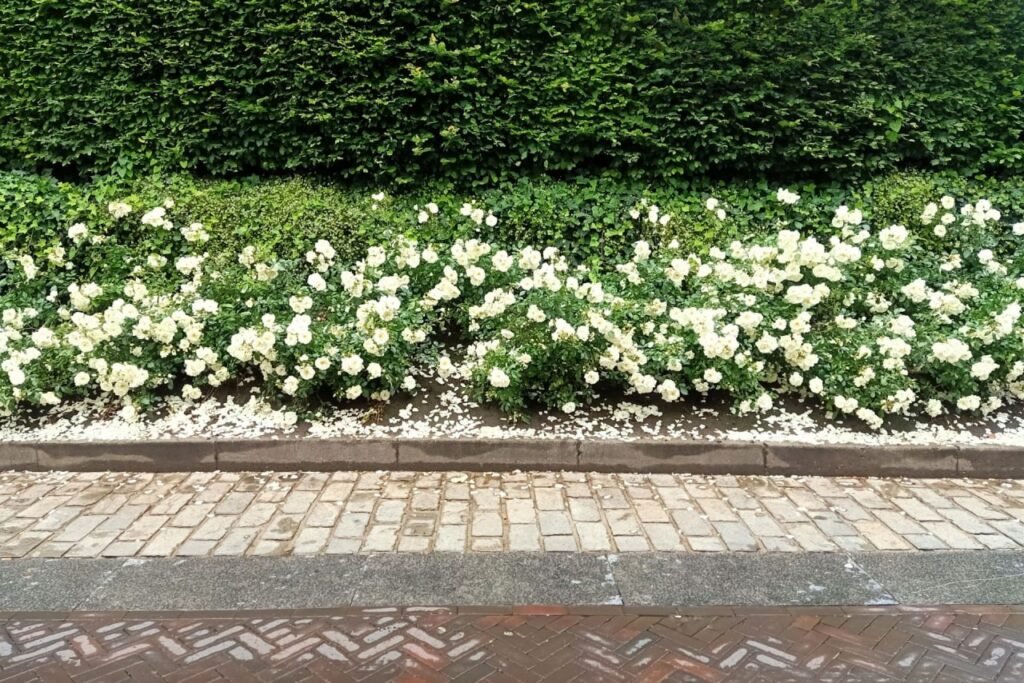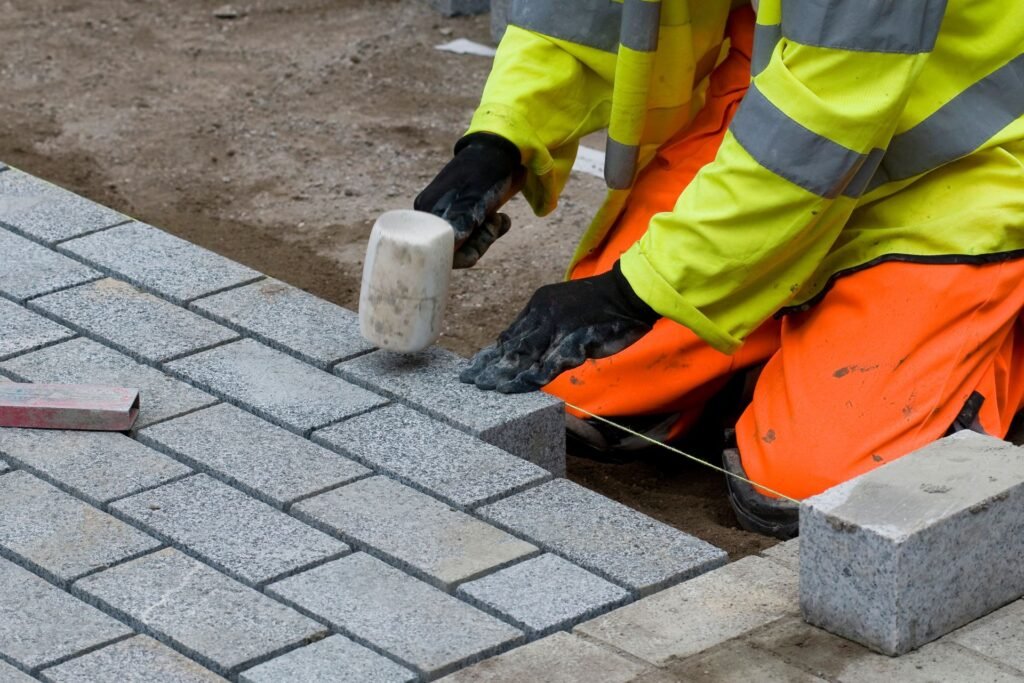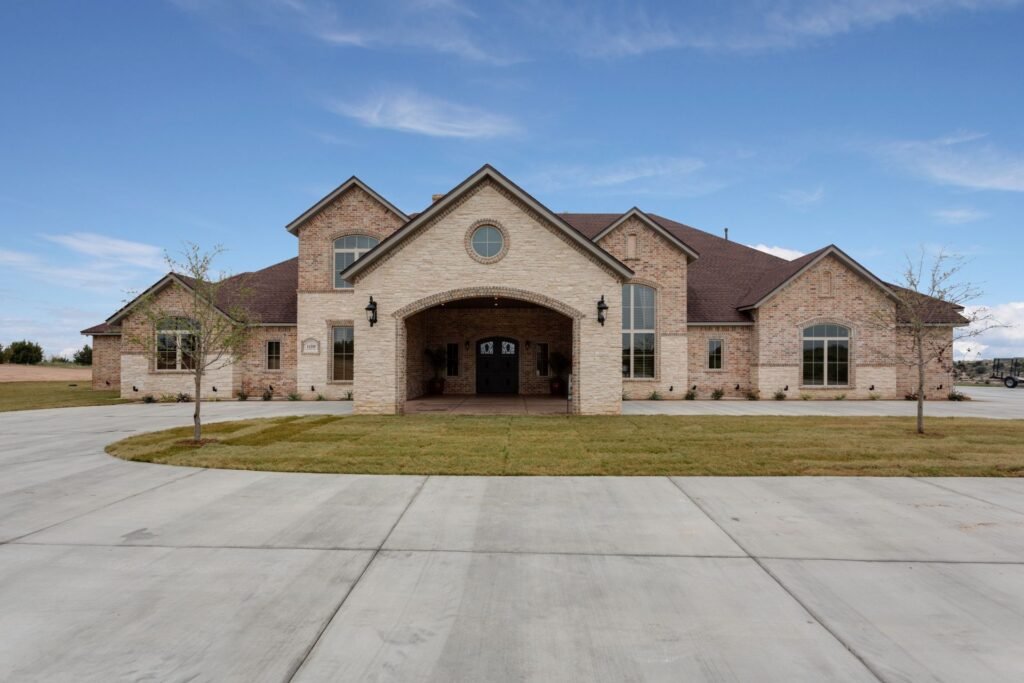Welcome to our comprehensive guide on concrete garden edging in New Zealand, where we’ll explore everything you need to know about enhancing your garden with durable, stylish, and low-maintenance concrete borders. Concrete garden edging is gaining popularity among Kiwi gardeners for its ability to define garden boundaries, control soil erosion, and add aesthetic appeal to outdoor spaces. In this post, you’ll discover the different types of concrete edging available, the numerous benefits it offers, design and installation tips, maintenance advice, cost considerations, and inspiring ideas to transform your garden. Whether you’re a DIY enthusiast or considering professional installation, this guide will provide valuable insights to help you make informed decisions and create a beautiful, functional garden space.
Concrete garden edging in New Zealand offers a durable, low-maintenance solution for defining garden boundaries, controlling soil erosion, and enhancing the visual appeal of outdoor spaces. With various styles, colors, and textures available, concrete edging can be customized to complement any garden design. Easy to install and maintain, it’s a popular choice among Kiwi gardeners looking to create a neat and attractive landscape.
Table of Contents
What Is Concrete Garden Edging
Concrete garden edging is a practical and aesthetic landscaping solution used to define garden boundaries, create clean separations between different garden areas, and enhance the overall look of your outdoor space. Essentially, it involves the installation of concrete borders along the edges of flower beds, pathways, lawns, and other garden features. These borders can vary in height, thickness, and shape, offering a wide range of design possibilities to suit various landscaping styles.
Concrete garden edging consists of a durable mixture of cement, sand, gravel, and water. This mix is poured into molds or formed directly on-site to create continuous, seamless edges that are both sturdy and long-lasting. The versatility of concrete allows for a multitude of design options, from simple and understated to elaborate and decorative, ensuring that it can complement any garden aesthetic.
Types of Concrete Garden Edging
Concrete garden edging comes in several styles, each offering unique visual appeal and functionality. Here are some of the most popular types.
1. Plain Concrete Edging
- Description: This type features a straightforward, smooth finish that blends seamlessly with any garden design. It’s a cost-effective option that provides a clean and minimalist look.
- Uses: Ideal for contemporary gardens or those looking to achieve a neat, unobtrusive border.
2. Stamped Concrete Edging
- Description: Stamped edging involves pressing patterns into the concrete surface while it is still wet. This can mimic the look of bricks, stones, or other textures, adding a decorative touch.
- Uses: Perfect for gardens with a rustic or natural theme, as it provides the appearance of more expensive materials at a lower cost.
3. Colored Concrete Edging
- Description: By adding color pigments to the concrete mix, this edging type offers a wide palette of hues to match or contrast with your garden’s color scheme.
- Uses: Suitable for those looking to make a bold statement or enhance the visual impact of their garden borders.
4. Custom-Shaped Concrete Edging
- Description: Custom-shaped edging is created using specific molds or freeform techniques to produce unique shapes and designs. This allows for personalized and intricate patterns that reflect individual style.
- Uses: Ideal for gardens with a specific theme or for homeowners who want a one-of-a-kind landscape feature.
Concrete garden edging not only provides structural benefits by preventing soil erosion and keeping mulch in place but also adds a polished and professional finish to any garden. Whether you prefer the simplicity of plain concrete or the elaborate details of stamped and colored options, there is a style to suit every taste and garden design.
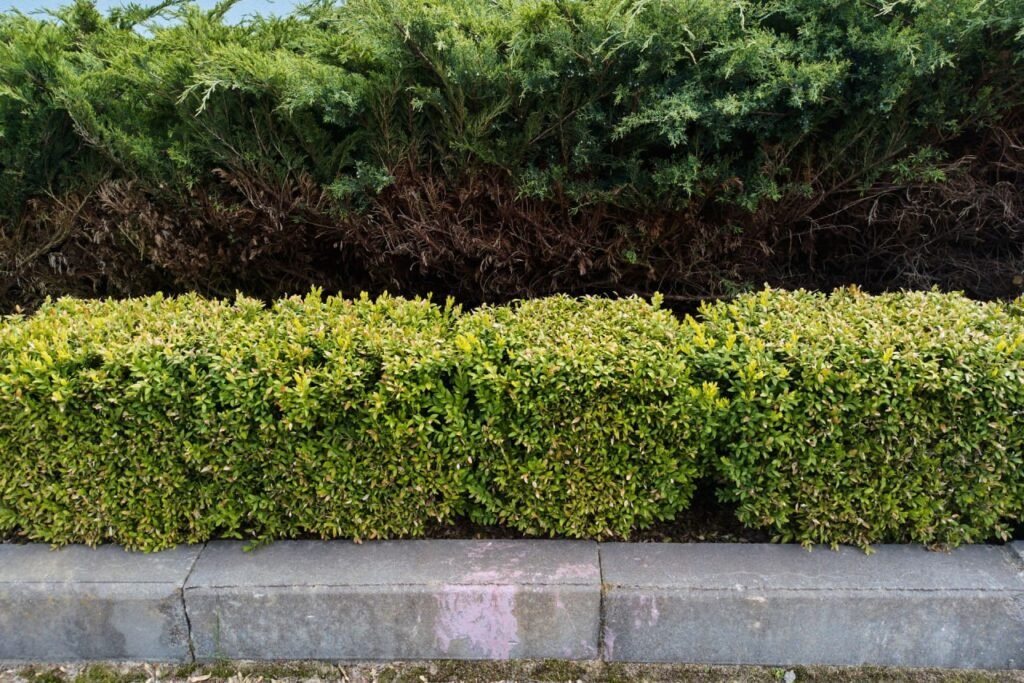
Benefits Of Concrete Garden Edging
Durability
Concrete garden edging is a robust choice that can withstand New Zealand’s diverse and often harsh weather conditions. From the scorching sun in the summer to heavy rains and occasional frosts in the winter, concrete remains unaffected. Unlike wood, which can rot or warp, or plastic, which can become brittle and crack, concrete garden edging retains its shape and strength over time. This durability ensures that your garden borders stay intact and looking great year after year, providing a long-lasting solution that requires less frequent replacements compared to other materials.
Low Maintenance
One of the standout benefits of concrete garden edging is its low maintenance requirements. Once installed, it needs very little attention to keep it looking its best. Unlike wood that needs regular sealing or staining, or metal that may rust and need repainting, concrete is relatively hassle-free. Occasional cleaning with a garden hose or a brush to remove dirt and debris is usually all it takes to maintain its appearance. This low maintenance characteristic makes concrete garden edging a practical choice for those who prefer spending more time enjoying their garden rather than maintaining it.
Aesthetic Appeal
Concrete garden edging isn’t just functional; it also adds a touch of elegance to any garden. Available in various shapes, sizes, and colors, concrete edging can be customized to complement any garden design. Whether you prefer a modern, sleek look or a more rustic, natural appearance, concrete can be tailored to suit your aesthetic preferences. It provides clean, crisp lines that can make flower beds and pathways stand out, enhancing the overall visual appeal of your outdoor space. With the ability to mimic other materials like stone or brick, concrete offers versatility that can elevate the look of your garden.
Functionality
Concrete garden edging serves multiple practical purposes in the garden. Firstly, it effectively defines garden boundaries, creating a clear separation between different areas such as flower beds, lawns, and walkways. This not only helps in organizing the garden but also enhances its overall structure and layout. Additionally, concrete edging plays a crucial role in controlling soil erosion by keeping soil in place, particularly on sloped areas. It also prevents grass and weeds from encroaching into flower beds, reducing the amount of time you need to spend on weeding. By maintaining clear boundaries and controlling soil movement, concrete edging helps keep your garden neat and well-maintained.
Concrete garden edging offers numerous benefits that make it a superior choice for garden borders. Its durability ensures it can withstand New Zealand’s varied weather conditions, while its low maintenance nature means less time spent on upkeep. The aesthetic appeal of concrete can enhance the beauty of any garden, and its functionality helps in defining spaces, controlling erosion, and preventing grass encroachment. By choosing concrete garden edging, you are investing in a long-lasting, attractive, and practical solution for your garden.

Designing Your Concrete Garden Edging
Planning Your Design
Designing concrete garden edging begins with thoughtful planning. Start by visualizing the layout and determining where the edging will enhance your garden’s aesthetics. Take a walk around your garden and note the areas that need definition, such as flower beds, pathways, and lawns. Sketch a rough layout on paper, marking the specific spots where you want the edging to be installed.
Consider the shape and flow of your garden. Curved edges often provide a more natural look, while straight lines give a formal and structured appearance. Think about the purpose of the edging—whether it’s for decorative purposes, to keep mulch in place, or to create a barrier between different garden areas. This will help you decide on the height and width of the edging.
Choosing a Style
Selecting the right style for your concrete garden edging is crucial to ensure it complements your garden and home exterior. Begin by assessing the overall design theme of your garden. Is it modern, rustic, or traditional? Your garden edging should harmonize with this theme.
For a contemporary look, opt for sleek, smooth finishes and geometric shapes. If your garden has a rustic or cottage feel, consider textured or irregular edges that mimic natural stone. Traditional gardens might benefit from classic, rounded edges that add a touch of elegance.
Match the edging style with your home’s exterior. The edging should blend seamlessly with the color and architectural style of your house. For instance, a modern home with clean lines would pair well with minimalist edging, while a Victorian-style house might look best with ornate, detailed edges.
Color and Texture Options
Concrete garden edging offers a variety of color and texture options to customize the look of your garden. You can choose from a range of colors to match or contrast with your garden’s plants and your home’s exterior. Earthy tones like browns and greens blend well with natural surroundings, while bold colors like red or charcoal can make a striking statement.
Textures add another layer of customization. Smooth finishes provide a sleek, modern appearance, while rough or stamped textures can mimic the look of natural stone or brick. You can also consider adding decorative elements such as imprints or patterns to the concrete for a unique touch.
To ensure the colors and textures last, use high-quality concrete stains or paints designed for outdoor use. These products are UV-resistant and can withstand harsh weather conditions, keeping your garden edging looking vibrant and new for years to come.
By carefully planning your design, choosing a style that complements your garden and home, and selecting the right colors and textures, you can create stunning concrete garden edging that not only enhances the beauty of your garden but also adds value to your property.
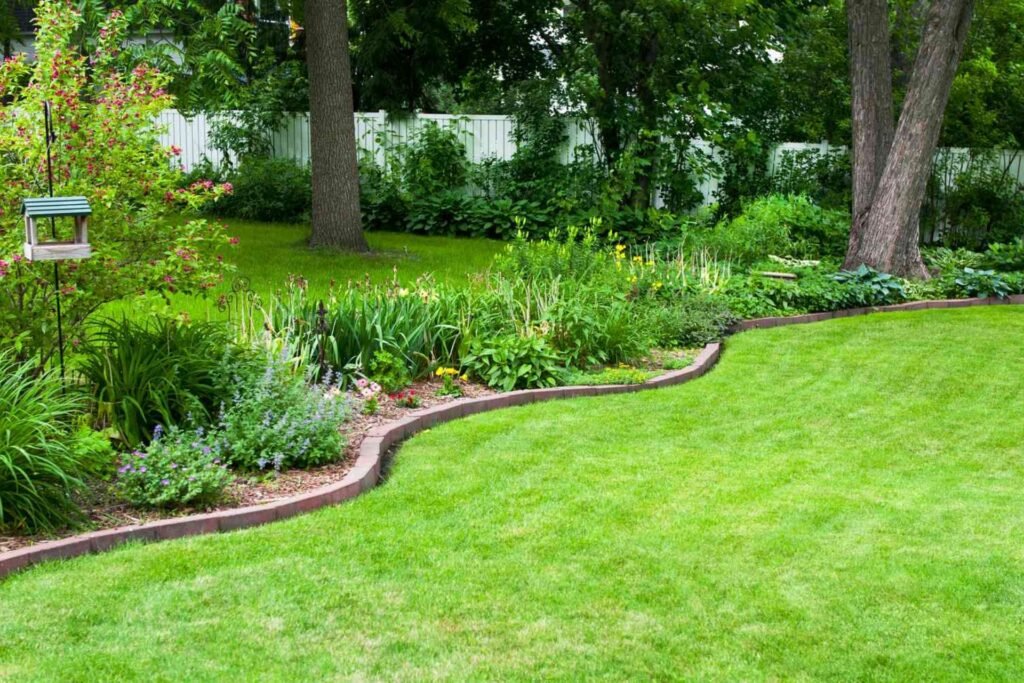
How To Install Concrete Garden Edging
Concrete garden edging is an excellent way to create defined borders in your garden, offering a neat and durable solution that enhances the overall look of your landscape. Whether you’re a DIY enthusiast or considering professional help, this guide will walk you through the essential materials, tools, and steps to achieve a perfect installation.
Materials and Tools Needed
Before you begin, gather the following materials and tools.
- Concrete mix
- Gravel or crushed stone
- Wooden stakes
- Masonry string
- Shovel or trenching tool
- Wheelbarrow
- Trowel
- Level
- Rubber mallet
- Concrete float
- Edging molds or form boards
- Safety gloves and goggles
Step-by-Step Installation Guide
Preparation
1. Measure and Mark the Area
- Use a tape measure to determine the length of the edging.
- Drive wooden stakes into the ground at the starting and ending points of your edging.
- Connect the stakes with masonry string to outline the path. Ensure the string is level and straight for a precise guide.
Digging the Trench
2. Dig the Trench
- Using a shovel or trenching tool, dig a trench along the marked line. The trench should be approximately 6 inches wide and 4 inches deep.
- Remove any roots, rocks, or debris from the trench to ensure a smooth base for the concrete.
Mixing and Pouring Concrete
3. Mixing the Concrete
- In a wheelbarrow, mix the concrete according to the manufacturer’s instructions. Typically, you will need to add water gradually and mix until you achieve a smooth, workable consistency.
- For added stability, place a layer of gravel or crushed stone at the bottom of the trench.
4. Pouring the Concrete
- Pour the mixed concrete into the trench, starting from one end and working your way to the other.
- Use a trowel to spread the concrete evenly, ensuring it fills the trench completely.
Setting and Smoothing
5. Setting the Concrete
- If using edging molds or form boards, place them along the trench to shape the concrete. Tap the molds gently with a rubber mallet to eliminate air pockets and ensure a tight fit.
- Allow the concrete to set slightly before smoothing.
6. Smoothing the Concrete
- Use a concrete float to smooth the surface of the concrete, creating a clean and level finish.
- For a decorative touch, you can use a trowel to add texture or patterns to the surface.
- Allow the concrete to cure according to the manufacturer’s recommendations, typically 24 to 48 hours.
DIY vs. Professional Installation
Deciding whether to tackle this project yourself or hire a professional depends on several factors.
DIY Installation
Pros
- Cost savings on labor.
- Satisfaction of completing the project yourself.
- Ability to work at your own pace.
Cons
- Requires time and physical effort.
- Potential for mistakes if you’re inexperienced.
- Need to purchase or rent tools and materials.
Professional Installation
Pros
- Expertise and experience ensure a high-quality finish.
- Saves time and effort.
- Professionals have access to specialized tools and materials.
Cons
- Higher cost due to labor fees.
- Less control over the project timeline.
Concrete garden edging can significantly enhance your garden’s aesthetic appeal while providing a durable and low-maintenance border. By following this guide, you’ll be well-equipped to install concrete edging successfully, whether you choose the DIY route or opt for professional assistance.

Maintenance Tips For Concrete Garden Edging
Concrete garden edging is a beautiful and durable way to define spaces in your garden, but like all outdoor features, it requires some maintenance to keep it looking its best. Here are some practical tips to help you maintain your concrete garden edging effectively.
Cleaning
Keeping your concrete garden edging clean is essential to maintain its appearance and prevent damage. Over time, moss, algae, and dirt can accumulate, making the concrete look unattractive and slippery.
1. Regular Sweeping: Start by regularly sweeping the concrete edging to remove loose dirt and debris. This simple step can prevent the buildup of grime and organic matter.
2. Using a Pressure Washer: For a deeper clean, use a pressure washer. Be cautious with the pressure setting to avoid damaging the concrete. A moderate setting is usually sufficient to remove dirt, moss, and algae.
3. Mild Detergents: If the concrete is particularly dirty, you can use a mild detergent or a mixture of water and white vinegar. Apply it with a brush, scrub gently, and rinse thoroughly with water.
4. Algae and Moss Removal: For persistent moss and algae, a commercial algae cleaner can be effective. Follow the manufacturer’s instructions, and ensure you rinse the area well to protect nearby plants.
Sealing
Sealing your concrete garden edging is crucial for its longevity. A good sealant protects the concrete from moisture, stains, and weather damage, keeping it looking fresh for years.
1. Choosing the Right Sealant: There are various sealants available, including acrylic, epoxy, and polyurethane. Choose a sealant that is suitable for outdoor use and specifically designed for concrete surfaces.
2. Application Process: Before applying the sealant, make sure the concrete is thoroughly clean and dry. Apply the sealant evenly using a brush or roller, following the manufacturer’s instructions. Typically, you may need to apply more than one coat.
3. Frequency of Sealing: It’s recommended to reseal concrete garden edging every 2-3 years. However, if the edging is exposed to harsh weather conditions or heavy use, you might need to do it more frequently. Regular sealing helps to maintain the color and prevent cracks and chips.
Repairing Cracks
Cracks can develop in concrete garden edging over time due to various factors such as weather changes, ground movement, or heavy impacts. Addressing these cracks promptly can prevent them from worsening.
1. Identifying Cracks: Regularly inspect your concrete edging for any signs of cracks or damage. Small hairline cracks can be easier to fix than larger ones.
2. Cleaning the Crack: Before repairing, clean the crack thoroughly to remove any dirt or debris. Use a wire brush or a vacuum to ensure the crack is clean.
3. Using Concrete Patch: For minor cracks, a concrete patching compound can be effective. Apply the patching compound with a trowel, pressing it firmly into the crack. Smooth the surface to match the surrounding area.
4. For Larger Cracks: If the cracks are more significant, you might need to use a concrete repair kit that includes a bonding agent. Follow the instructions carefully, ensuring a thorough mix and application.
5. Preventing Further Damage: After repairing, consider applying a sealant over the repaired area to protect it from future damage. Regular maintenance and sealing can significantly reduce the chances of cracks reappearing.
Maintaining your concrete garden edging doesn’t have to be a daunting task. With regular cleaning, proper sealing, and timely repairs, you can ensure that your garden edging remains attractive and functional for many years. These simple steps can help you preserve the beauty and durability of your concrete garden edging, making your garden a delightful place to enjoy.
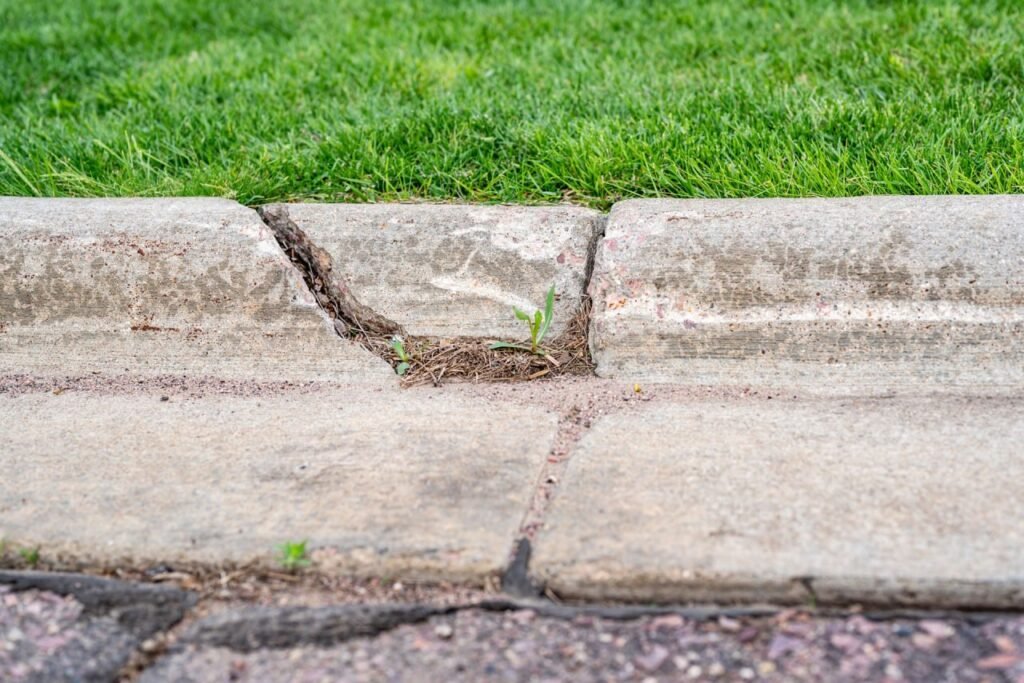
Cost Considerations
When planning for concrete garden edging, understanding the various cost considerations is essential to ensure your project stays within budget while maximizing value. Let’s delve into the different aspects of costs involved, including material expenses, labor charges, and potential long-term savings.
Material Costs
The primary expense for any concrete garden edging project is the cost of materials. Here’s a detailed breakdown.
1. Concrete Mix: The cost of concrete mix can vary based on quality and type. On average, you can expect to pay between $4 to $10 per bag, depending on whether you opt for pre-mixed or custom-mixed concrete.
2. Forms and Molds: To shape your concrete edging, you’ll need forms or molds. These can range from $20 to $100, depending on the size and complexity of the design.
3. Reinforcement: Adding reinforcement like rebar or mesh can increase durability. This typically adds an extra $1 to $3 per square foot.
4. Finishing Materials: Finishing materials such as sealants or stains can add to the aesthetic and longevity of your edging. These can range from $10 to $50 depending on the type and quantity needed.
Labor Costs
Labor costs can significantly influence your overall budget, especially if you decide to hire professionals. Here’s what you might expect.
1. Professional Installation: Hiring a professional can ensure a high-quality finish and save you time. Labor costs can vary widely, but on average, you might pay between $30 to $60 per hour for professional services.
2. DIY Considerations: If you choose to go the DIY route, you’ll save on labor costs but should factor in your time and effort. Additionally, renting or purchasing necessary tools can add to your expenses.
Long-Term Savings
Investing in concrete garden edging can offer substantial long-term savings, making it a cost-effective choice for your landscaping needs. Here’s how.
1. Durability: Concrete is incredibly durable and can withstand harsh weather conditions, reducing the need for frequent repairs or replacements. Unlike other materials that may degrade over time, concrete remains steadfast, offering lasting value.
2. Low Maintenance: Concrete edging requires minimal maintenance compared to alternatives like wood or plastic. Routine cleaning and occasional sealing are generally sufficient to keep it looking new. This low upkeep translates to savings on maintenance costs over the years.
3. Increased Property Value: Well-installed and aesthetically pleasing concrete edging can enhance the overall appearance of your garden, potentially increasing your property’s market value. This can provide a good return on investment if you decide to sell your home in the future.
4. Preventing Garden Bed Encroachment: By keeping your garden beds neatly contained, concrete edging helps prevent the spread of grass and weeds. This can reduce the need for costly weeding and maintenance, allowing your plants to thrive without competition.
While the initial cost of concrete garden edging might seem significant, the long-term benefits and savings make it a wise investment. By carefully considering material and labor costs, and appreciating the durable, low-maintenance nature of concrete, you can achieve a beautiful, cost-effective solution for your garden’s borders.

Inspiring Ideas For Concrete Garden Edging
Concrete garden edging can transform your outdoor space into a visually appealing, well-defined landscape. To spark your creativity and help you envision the perfect edging for your garden, we’ve compiled a range of ideas and real-life examples. Here’s a closer look at how you can enhance your garden with concrete edging.
Photo Gallery: A Collection of Inspiring Photos Showcasing Different Designs and Styles
Seeing is believing, and our photo gallery is designed to inspire. We’ve curated a selection of stunning images that showcase the versatility and beauty of concrete garden edging. Whether you’re aiming for a sleek, modern look or a more rustic, natural feel, these photos highlight various designs and styles that can suit any garden aesthetic. You’ll find examples of smooth, minimalist borders, intricate patterns, and even colored concrete options that add a pop of personality to your garden.
Case Studies: Brief Case Studies of Successful Concrete Garden Edging Projects in New Zealand Gardens
Nothing speaks louder than real-world examples. Our case studies delve into successful concrete garden edging projects across New Zealand, providing you with practical insights and ideas. Each case study outlines the initial challenges, the creative solutions implemented, and the stunning results achieved.
Example 1: The Smith Family’s Urban Oasis
The Smith family wanted to create a tranquil retreat in their urban backyard. They opted for smooth, curved concrete edging to define their flower beds and pathways. The result was a seamless blend of functionality and aesthetic appeal, giving their garden a clean and organized look while also enhancing its overall charm.
Example 2: Coastal Garden in Wellington
A coastal garden in Wellington faced unique challenges due to salty air and strong winds. Concrete edging proved to be the perfect solution, offering durability and resistance to the harsh coastal conditions. The garden now boasts robust, stylish borders that protect the plants and add to the garden’s coastal theme.
Example 3: The Rustic Retreat in Christchurch
In Christchurch, a homeowner wanted to create a rustic retreat reminiscent of an old English garden. They chose textured concrete edging with a weathered finish to complement their vision. The edging not only defined the garden spaces but also added a timeless, rustic touch that perfectly matched the homeowner’s aesthetic goals.
Concrete garden edging is a versatile and durable option that can enhance the beauty and functionality of any garden. By exploring our photo gallery and reading through the case studies, you can gather ideas and inspiration for your own garden projects. Whether you’re looking to create a modern masterpiece or a cozy, rustic retreat, concrete edging can help you achieve your landscaping dreams.
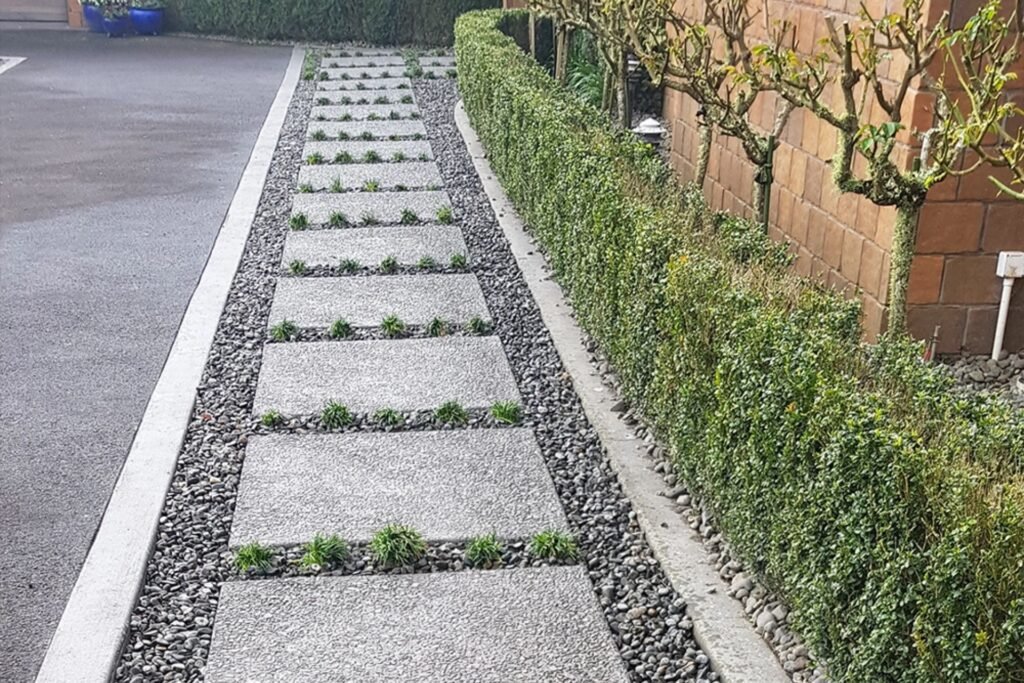
Environmental Impact
Sustainability
Concrete is renowned for its durability and longevity, making it a sustainable choice for various construction projects. Unlike other building materials that may degrade or require frequent replacements, concrete structures can last for decades with minimal maintenance. This longevity translates into fewer resources spent on repairs and replacements, which ultimately reduces the environmental footprint of a building over its lifespan.
Additionally, concrete is highly recyclable. At the end of a structure’s life, concrete can be crushed and reused as aggregate in new concrete mixtures or as base material for roads and other infrastructure projects. This recycling process helps conserve natural resources and reduces the need for new raw materials, contributing to a more sustainable construction cycle. Moreover, the inherent thermal mass of concrete can significantly enhance the energy efficiency of buildings by regulating indoor temperatures and reducing the need for heating and cooling.
Eco-Friendly Options
In recent years, there has been a significant push towards developing more eco-friendly concrete mixes and alternatives. Traditional concrete production is associated with high carbon emissions, primarily due to the cement manufacturing process. However, innovative solutions are emerging to address these environmental concerns.
One such solution is the use of supplementary cementitious materials (SCMs) like fly ash, slag, and silica fume. These materials can partially replace cement in concrete mixes, reducing the overall carbon footprint. Fly ash, a byproduct of coal combustion, not only diverts waste from landfills but also enhances the durability and workability of concrete. Similarly, slag, a byproduct of steel manufacturing, can improve the strength and sustainability of concrete when used as a partial cement replacement.
Another eco-friendly alternative is the incorporation of recycled materials, such as crushed glass, plastic, or rubber, into concrete mixes. These materials can enhance the properties of concrete while reducing waste and conserving natural resources. For instance, incorporating recycled plastic fibers can improve the tensile strength and flexibility of concrete, making it more resistant to cracking and environmental degradation.
Furthermore, advancements in green technology have led to the development of carbon-capturing concrete. This innovative material can absorb and store carbon dioxide from the atmosphere, helping mitigate the effects of climate change. Carbon-capturing concrete not only reduces the overall carbon footprint of construction projects but also contributes to the global efforts in combating greenhouse gas emissions.
The sustainability and eco-friendly options of concrete make it a viable and responsible choice for modern construction. By choosing concrete, builders and developers can significantly reduce the environmental impact of their projects while contributing to a more sustainable future. The integration of recycled materials, supplementary cementitious materials, and carbon-capturing technologies are paving the way for a greener construction industry, demonstrating that concrete can be both durable and environmentally friendly.

FAQs: About Concrete Garden Edging NZ
What is concrete garden edging?
Concrete garden edging is a type of landscape border made from concrete, designed to define garden beds, pathways, and other landscaped areas. It helps in keeping soil and mulch in place while preventing grass and weeds from encroaching into garden beds.
What are the benefits of using concrete garden edging?
Concrete garden edging offers several benefits including durability, low maintenance, aesthetic appeal, and functionality. It withstands harsh weather conditions, requires minimal upkeep, enhances the visual appeal of gardens, and effectively separates different areas of the garden.
How do I choose the right style of concrete garden edging for my garden?
When choosing a style, consider the overall design of your garden and home exterior. Look for options that complement your existing landscape. Concrete edging comes in various styles, including plain, stamped, colored, and custom shapes, allowing you to select a design that suits your aesthetic preferences.
Can I install concrete garden edging myself?
Yes, you can install concrete garden edging yourself. The process involves measuring and marking the area, digging a trench, mixing and pouring concrete, and setting and smoothing the concrete. However, if you are not confident in your DIY skills, you may want to hire a professional for a seamless finish.
What materials and tools do I need for installing concrete garden edging?
Essential materials include concrete mix, water, and reinforcement materials if needed. Tools required are a shovel, measuring tape, level, trowel, mixing tools, and protective gear. For more complex designs, additional tools and materials may be necessary.
How do I maintain concrete garden edging?
Maintenance is simple and involves regular cleaning to remove dirt, moss, or algae. Sealing the concrete periodically can protect it from the elements and extend its lifespan. If cracks appear, they should be repaired promptly to prevent further damage.
How much does concrete garden edging cost in New Zealand?
The cost varies depending on the materials used, the length of the edging, and whether you opt for DIY installation or hire a professional. Generally, you can expect to pay for materials and possibly labor costs if hiring a professional. Investing in concrete edging can save money over time due to its durability and low maintenance.
Is concrete garden edging environmentally friendly?
Concrete garden edging can be environmentally friendly, especially when using eco-friendly concrete mixes. Its longevity and recyclability also contribute to its sustainability. Choosing local suppliers can reduce the carbon footprint associated with transportation.
Can concrete garden edging be customized?
Yes, concrete garden edging can be customized in terms of shape, size, color, and texture. Customization allows you to create unique designs that match your garden’s theme and personal style preferences.
Where can I find professional installers for concrete garden edging in New Zealand?
You can find professional installers through local landscaping companies, online directories, or recommendations from friends and family. It’s advisable to check reviews, request quotes, and view previous work to ensure you choose a reputable professional for your project.
Conclusion
In conclusion, concrete garden edging offers a versatile and durable solution for enhancing the aesthetic and functional aspects of any garden. Throughout this post, we’ve explored the benefits of concrete edging, including its longevity, ease of maintenance, and the variety of design options available to suit different landscaping styles. We also provided practical advice on installation and tips for maximizing its lifespan. As you plan your next garden project, consider incorporating concrete garden edging to achieve a polished and professional look. To help you get started, check out the resources and local suppliers we’ve linked for quality materials and expert guidance. We’d love to hear about your own experiences with garden edging or any questions you might have, so feel free to share in the comments below.
About the Author:
Mike Veail is a recognized digital marketing expert with over 6 years of experience in helping tradespeople and small businesses thrive online. A former quantity surveyor, Mike combines deep industry knowledge with hands-on expertise in SEO and Google Ads. His marketing strategies are tailored to the specific needs of the trades sector, helping businesses increase visibility and generate more leads through proven, ethical methods.
Mike has successfully partnered with numerous companies, establishing a track record of delivering measurable results. His work has been featured across various platforms that showcase his expertise in lead generation and online marketing for the trades sector.
Learn more about Mike's experience and services at https://theleadguy.online or follow him on social media:

